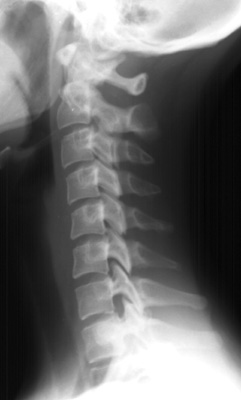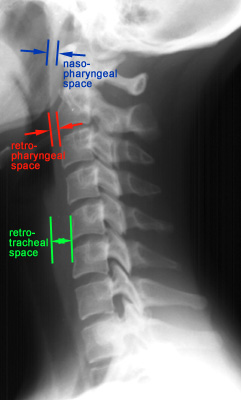Imaging of the Cervical Spine > Interpretation > Soft Tissue Space
Soft Tissue Space
![]()
Preverteral soft tissue swelling is important in trauma because it is usually due to hematoma formation secondary to occult fractures. Unfortunately, it is extremely variable and nonspecific.
Maximum allowable thickness of preverteral spaces is as follows:
Nasopharyngeal space (C1) - 10 mm (adult)
Retropharyngeal space (C2-C4) - 5-7 mm
Retrotracheal space (C5-C7) - 14 mm (children), 22 mm (adults).
Soft tissue swelling in symptomatic patients should be considered an indication for further radiographic evaluation. If the space between the lower anterior border of C3 and the pharyngeal air shadow is > 7 mm, one should suspect retropharyngeal swelling (e.g. hemorrhage). This is often a useful indirect sign of a C2 fracture. Space between lower cervical vertebrae and trachea should be < 1 vertebral body.


Question: Retrotracheal space should be:
A. < 10 mm in adults.
B. < 7 mm in adults.
C. < 22 mm in adults.
Answer: C
